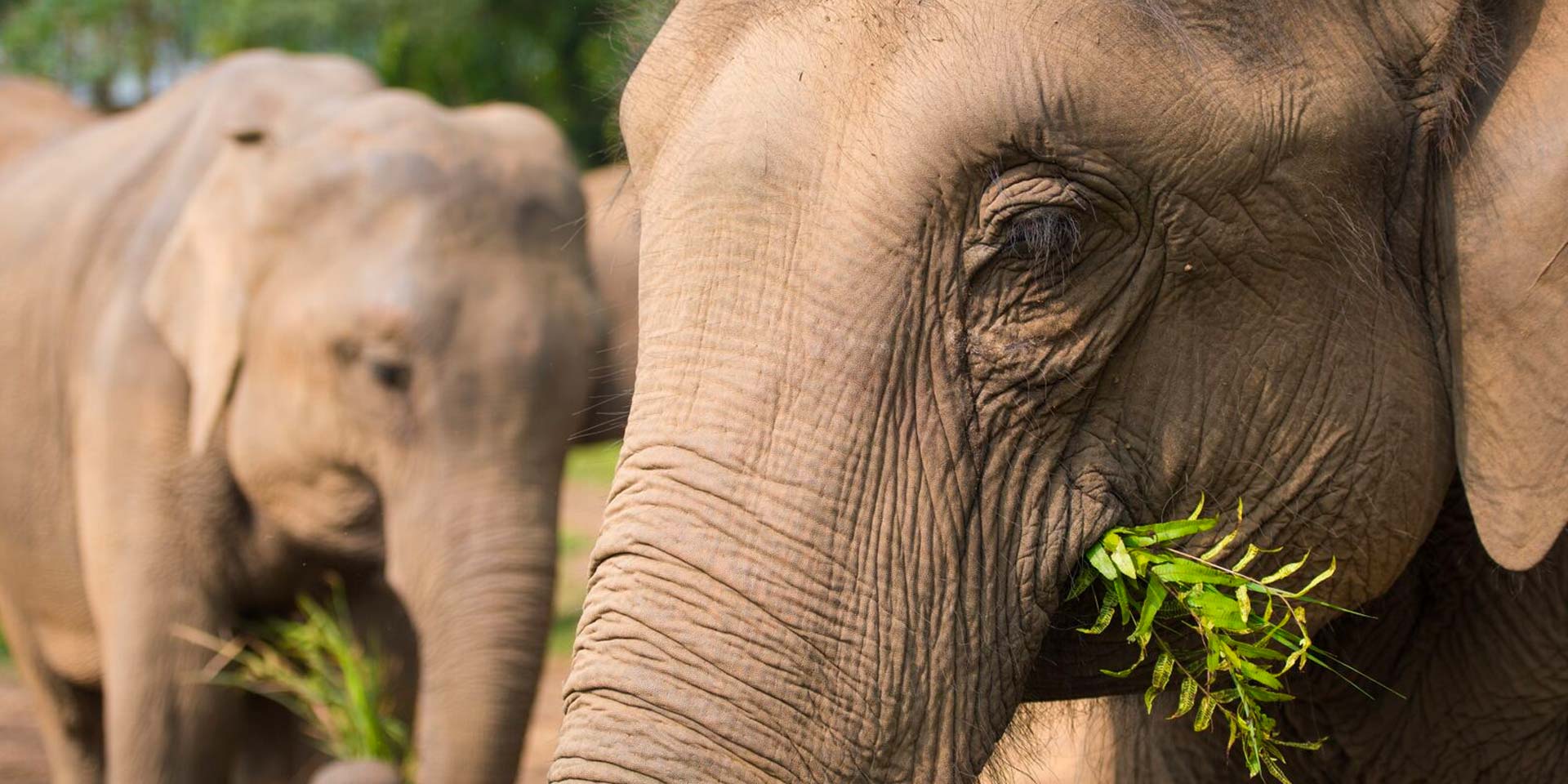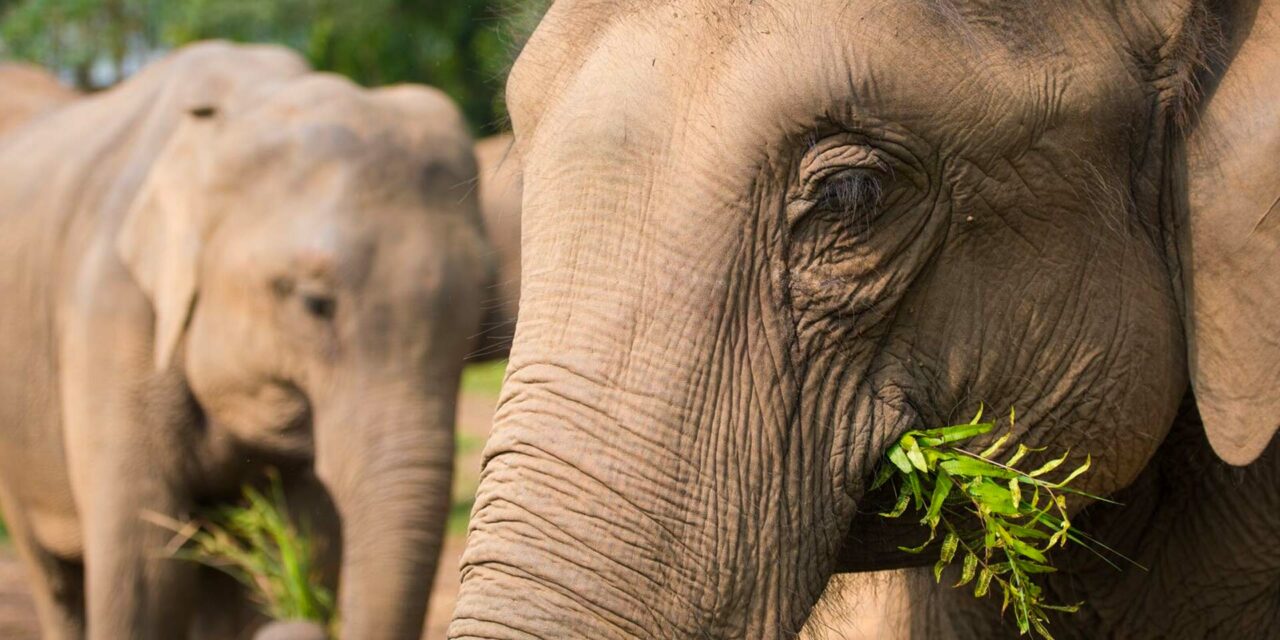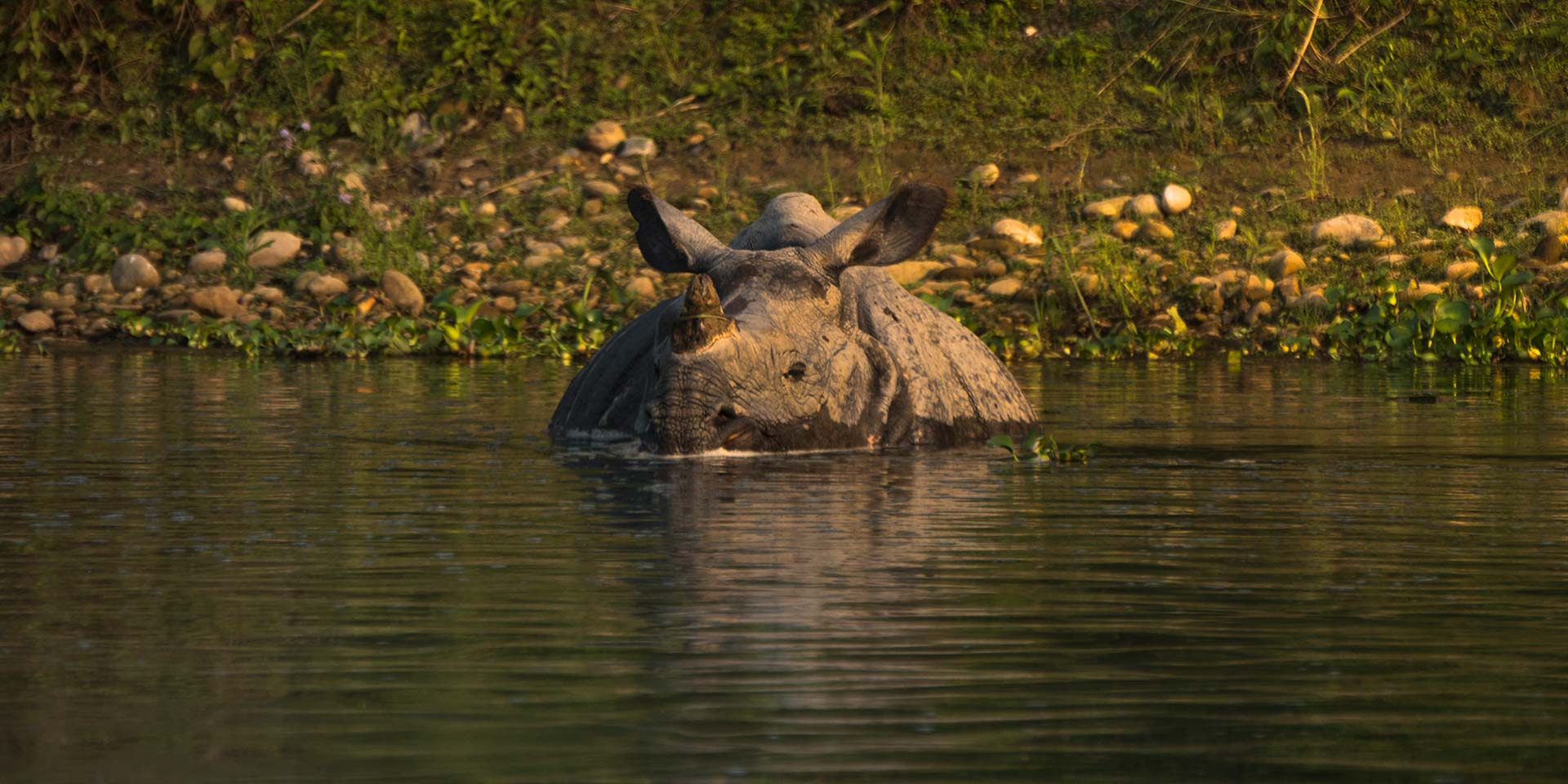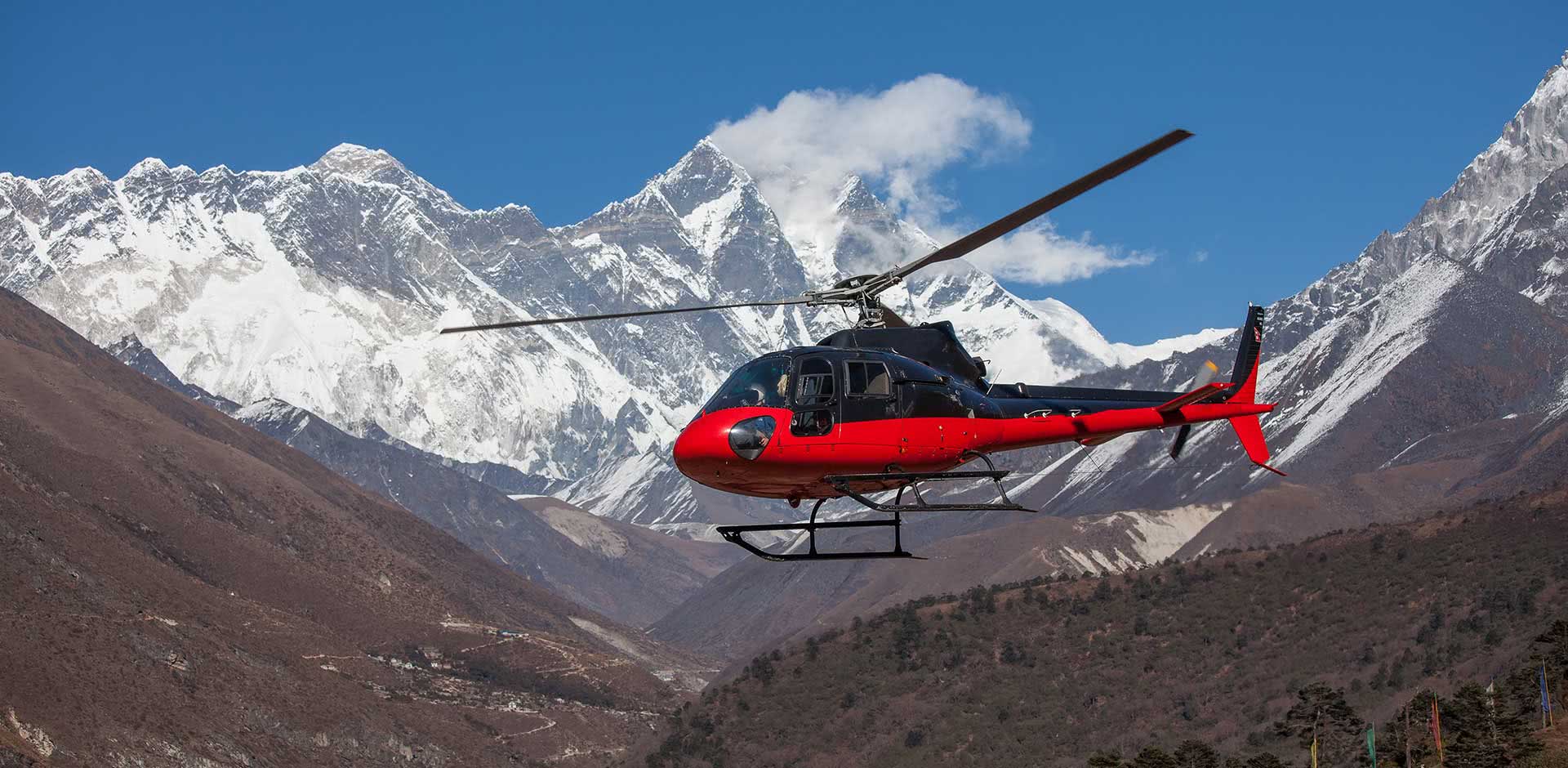When the Nepali tourism industry stalled out for over a year after the tragic earthquakes in 2015 the Tiger Tops management team had a lot of time to reflect on their decades as the leader in conservation tourism in Nepal. Tiger Tops started out as a hunting outfit in remote Nepal in 1964, but was bought out by Jim and John Edwards in 1972 after a chance meeting with the founders at the famed Explorers Society in New York. Since then it has expanded to include the Karnali Lodge, Tharu Lodge, Elephant Camps, and the Tiger Mountain Lodge run by the next generation of Edwards, all with a focus conservation tourism.
The ten elephants at Tiger Tops Elephant Camp in Chitwan National Park have come to find a “change in their job description” as GM Marie Stissing Jensen says.
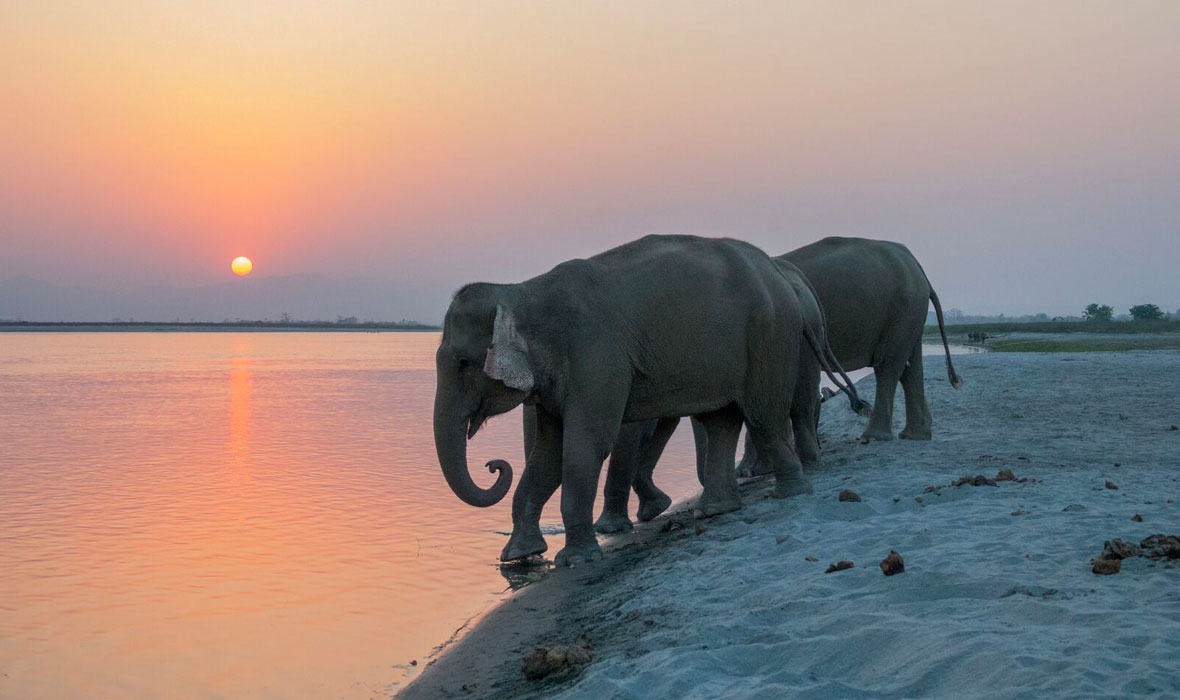
ABOVE: Elephants bathing at sunset.
Aware that change does not come overnight, having grown up in Nepal, Kristjan Edwards slowly shifted the focus of the Tiger Tops Elephant program. But now what differentiates Tiger Tops from other hotels in Nepal is that at Tiger Tops “elephants are allowed to be elephants,” and the guests get to be a part of this, to live among them in camp and walk beside them into the jungle and to gather their food. The elephants were never the product, Kristjan says, they were the vehicle.
Kristjan Edwards, John’s oldest son, reached out to Carol Buckley of Elephant Aid International to discuss improving the welfare for the elephants at Tiger Tops. The first step was creating open enclosures so the elephants could socialize and engage off of the traditional chains. This shift was much more difficult than it sounds. Both the elephants and the mahouts needs had to be considered, along with the fears which these changes brought.
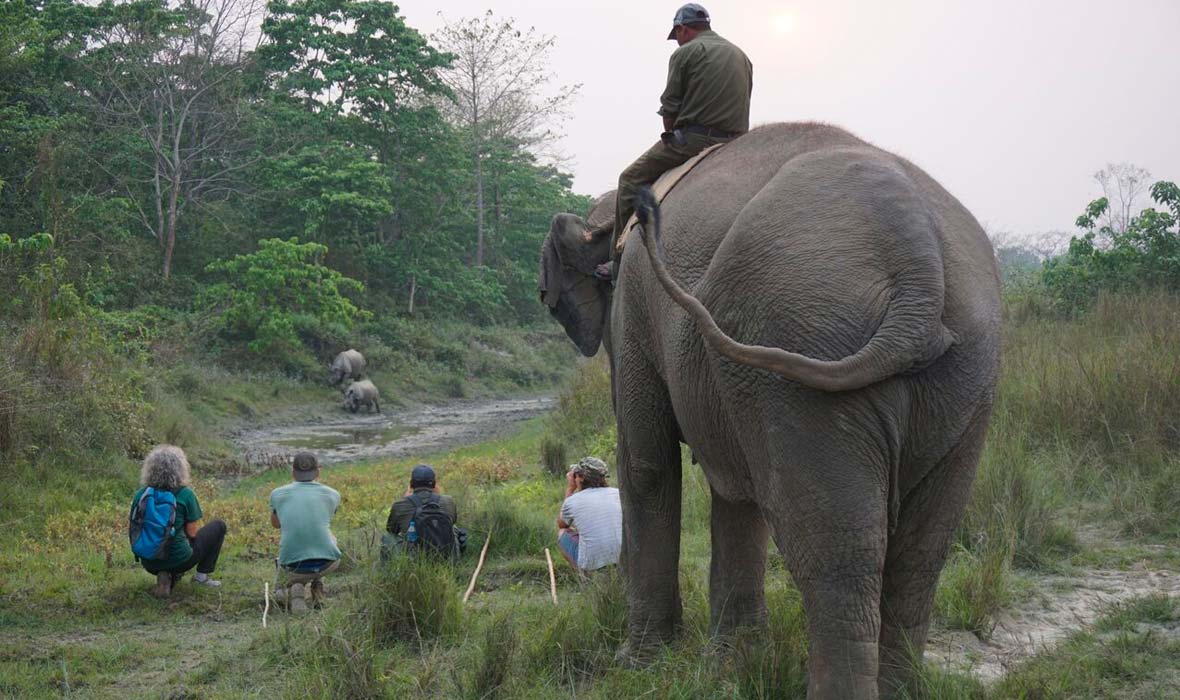
ABOVE: One-horned rhinos with a mahout riding an elephant. As elephant riding is being phased out throughout East and Southeast Asia, companies are looking for more ethical elephant experiences.
Elephants have been an integral part of life in Nepal for centuries. While much of Asia moves against elephant riding altogether, to this day elephants remain the only mode of transport for conservation work when the monsoons make the jungles impassable.
“Why Tiger Tops became famous was because we took conservation really freaking seriously. That was our product, we were in the middle of the jungle and the naturalists; the wildlife, was more important than even our guests.”
“If we are going to go into this animal product, which we are, it’s successful, we are doing well, people love it, my feeling is that we don’t just bow down to marketing, we do what is real. What is for the elephants,” Kristjan tells me sitting at a coffee shop near the organization’s Kathmandu offices.
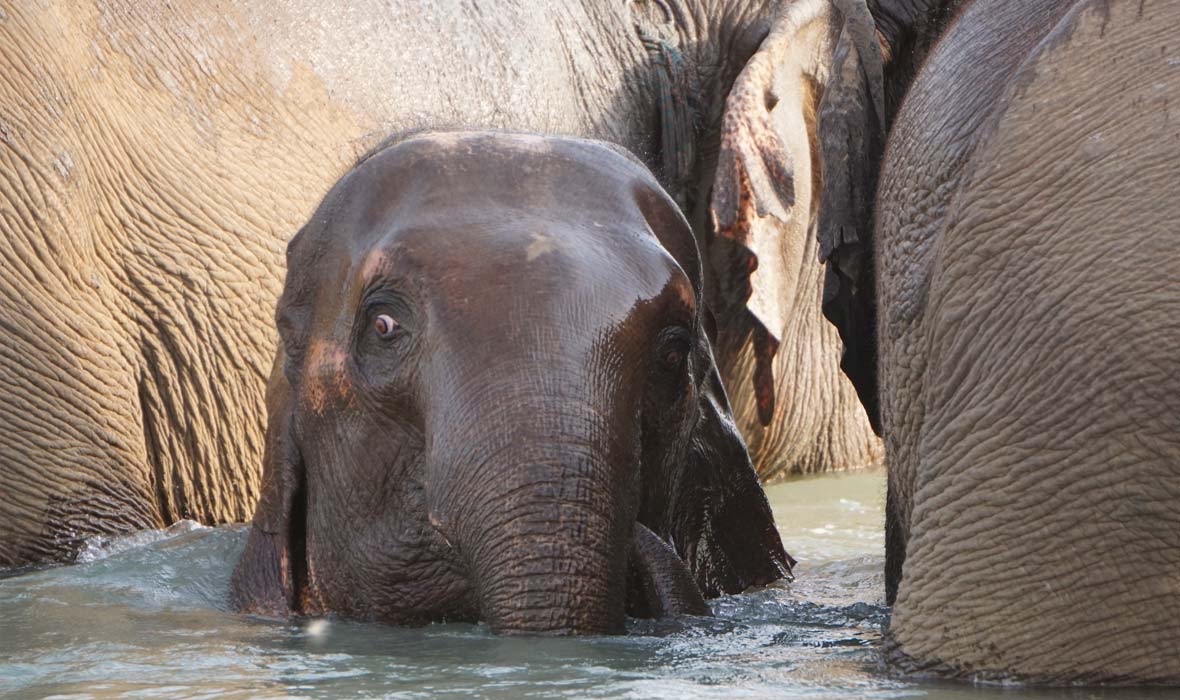
ABOVE: Baby elephant at Tiger Tops.
The most notorious symbol for elephant abuse is the bull hook, shanked into the elephant’s head to control it. This was what Kristjan and the team decided needed to stop, and the answer was a new middle ground: walking safaris with elephants in the buffer zone. This shifted the guest experience entirely.
“Sitting on top of them you’re not with the elephant,” as Kristjan says “walking with them, you’re with an elephant.”
Now instead of riding, guests get to walk side by side into the jungle to gather fodder for the animals, experiencing their daily needs and lives.
While elephant welfare is key, however, guest safety is paramount, which is why the mahouts still ride the elephants – a discrepancy visitors often ask about. Elephants are not accustomed to receiving commands from the ground, and should an emergency occur, a mahout is best placed from above to calm the beast and keep guests safe.
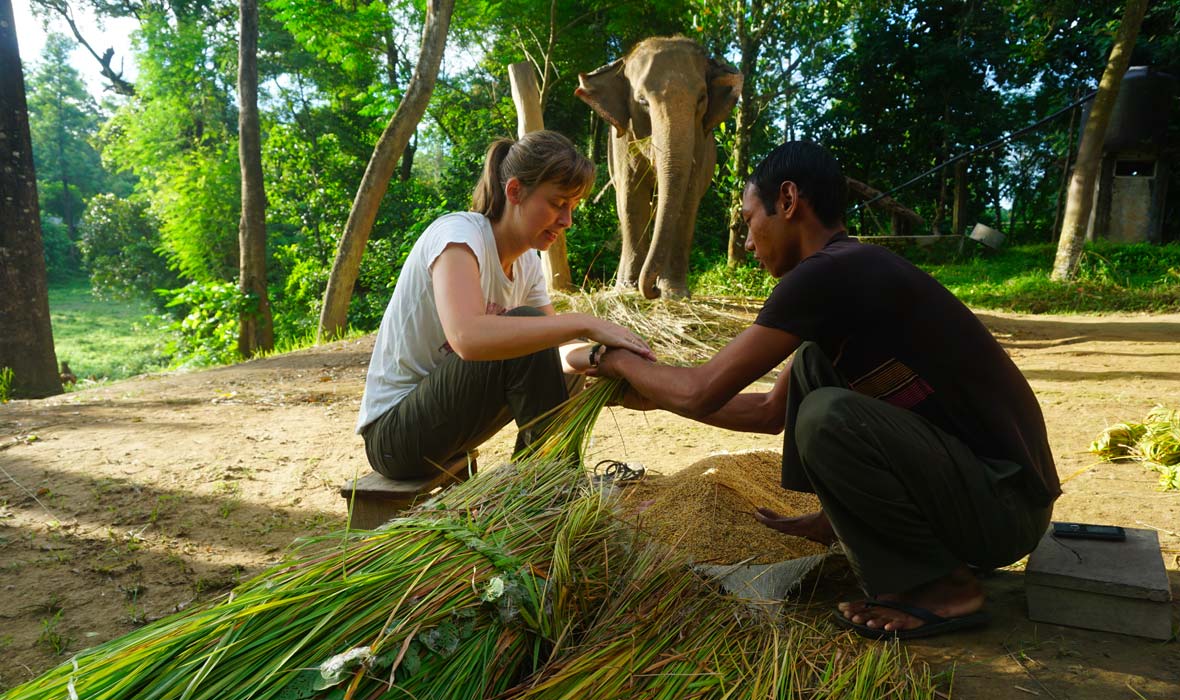
ABOVE: Prepping food for the elephants.
“I didn’t know about animal rights, my whole life was conservation,” Kristjan acknowledges. Only as they evolved their services have they learned more working with top scientists and researchers. “Our elephants were always treated well,” Kristjan says. “We simply didn’t know about other ways of living with them,” but “if I get a baby elephant [now] it will be trained in a positive reinforced manner. I won’t buy another elephant.”
Tiger Tops continues to look ahead for ways to evolve responsible wildlife tourism. Kristjan states that other hotels in the Chitwan area are watching to see how business responds to these changes, but the response from guests has been positive.
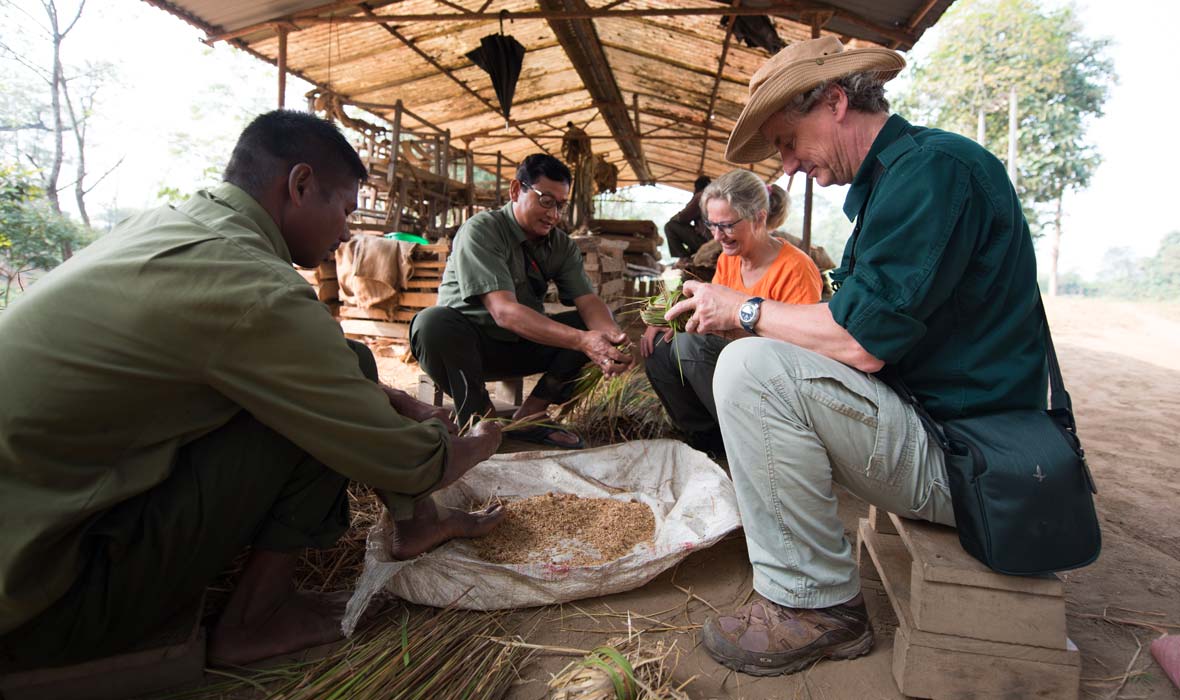
Change won’t come overnight to Chitwan as the Nepal tourism industry relies on heavily elephants. His hope is that slowly they will come to see that welfare-focused elephant experiences are better business, with tourists having more honest interactions with the animals and elephants less stressed.
And for guests at Tiger Tops, sitting in the quiet of the buffer zone outside the national park drinking sundowners while watching the elephants bathe in the waters of the Nayarani River is an experience not to be missed.
The elephants play as the sun drops down in the sky, free to be elephants, without commands or demands, their quirks and unique personalities on display.
“They behave like elephants, they can be funny, they do elephant-ish stuff.”

